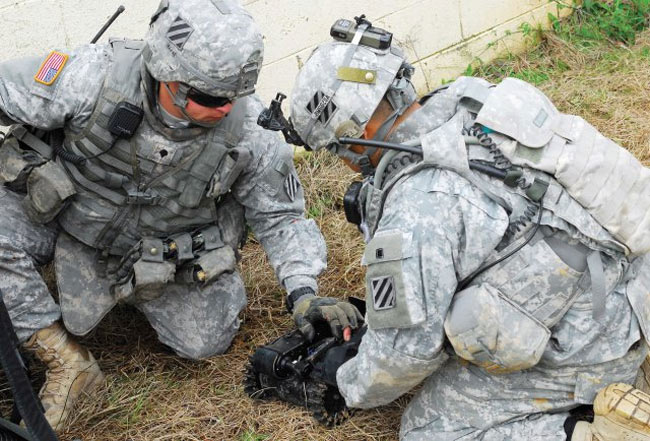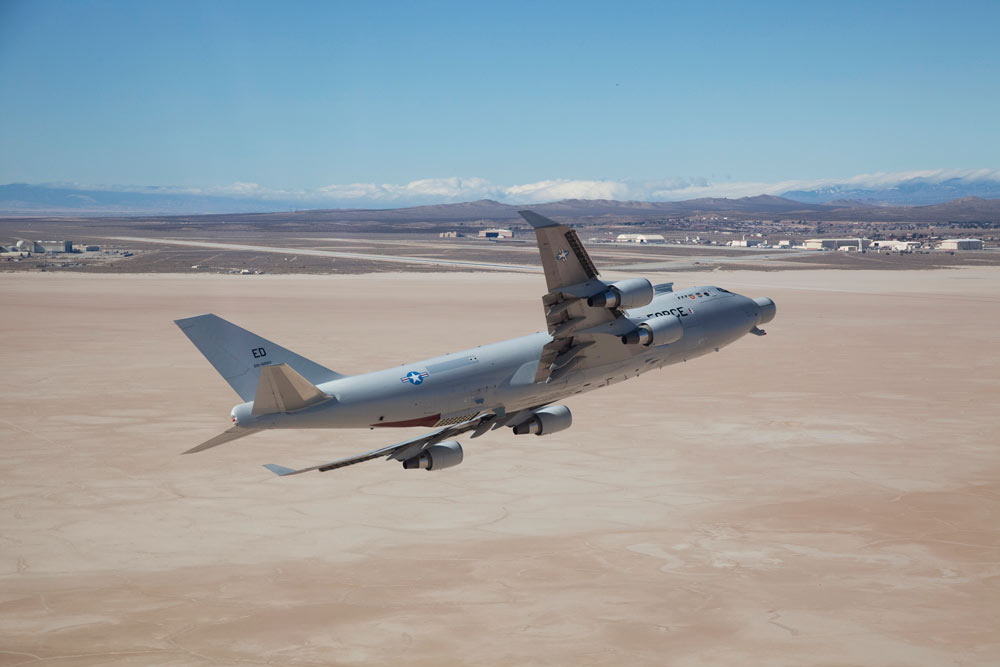Future Battlefields: Less 'Star Wars,' More Tiny Robots

"Star Wars" battlefields may seem imminent given the U.S. military's enthusiasm for testing laser weapons on planes, ships and vehicles. But a Pentagon workshop found that lasers, cyberwarfare, 3D printers and biological tools seem unlikely to revolutionize the battlefield by 2025.
Only one futuristic technology tended to stand out — swarms of tiny robots that could act as sneaky spies or clear enemy-held buildings without risking human lives. Still, that represented just one of many ideas considered during war games held among military officers and scientists at the U.S. Army War College in Carlisle, Pa., from Aug. 14-15.
"When we're talking about PackBots or the Predator [drone], we're talking about the Model T Ford," said Peter Singer, director of the 21st Century Defense Initiative at the Brookings Institute and leader of the NeXTech workshop. "It's the Wright brothers flyer of this technology — the first generation."
The NeXTech workshop represented the second in a series focused on identifying game-changing technologies for tomorrow's battlefields. A first workshop held in Washington, D.C., looked at the broader questions of what should count as a "game-changing" technology.
In the second workshop, participants imagined how possible "game-changing" technologies could transform the way the U.S. military operates in four possible scenarios. (The workshop operated under the Chatham House rules that ask participants to not identify others by name or organization, unless individuals grant permission.)
Armored assault on a city
The first scenario imagined a U.S. armored brigade assaulting a fortified city defended by enemy troops, tanks and armored vehicles. Fighting house-to-house in cities has historically led to a high number of deaths and injuries among attackers.
Get the world’s most fascinating discoveries delivered straight to your inbox.
Most of the futuristic technologies on the table failed to offer a way around the costly problem of storming enemy-held buildings. Cyberwarfare might take down communications and command centers, biological markers could help tag enemies and separate them from civilians, and lasers or microwave weapons could keep streets clear.
The big game-changer — voiced by many workshop participants — involved small robots or drones that could enter buildings and hunt down enemies without putting U.S. soldiers or Marines at risk. One expert even suggested tiny drones capable of injecting enemy soldiers with anesthetic drugs, rather than diverting their limited power supplies to mounted lasers or similar weapons.
Smaller, more powerful batteries or similar energy storage could also give the U.S. military freedom to move around without guarding vulnerable fuel convoys — a huge Achilles heel in Iraq and Afghanistan. But an energy expert said he did not see any game-changing technology for energy storage coming within a decade.
Naval blockade of disputed islands
A second scenario put the U.S. military in the position of having to prevent an enemy invasion force from landing on small, inhabited islands surrounded by rich resources and claimed by several countries. That scenario resembled a worst-case result of the real-life drama involving small islands disputed by Asian countries such as China, Japan, South Korea and others.
Once again, most technologies seemed to merely enhance existing U.S. military capabilities. Cyberwarfare could disable systems aboard an enemy fleet as a nonlethal warning, especially if the damage was reversible. Biological tricks could speed up ship hull corrosion to delay an enemy fleet from leaving port. U.S. aircraft carriers and cruisers could carry 3D printing centers to quickly create replacement parts or drones.
Robots rode to the rescue once more in the Pentagon workshop's collective thinking. Participants envisioned tiny robot spies listening in on conversations aboard enemy warships, or helping hack into the enemy fleet's systems.
The future U.S. Navy might even send out a huge submarine as an underwater mothership for deploying a "family" of swimming or possibly flying robots, rather than risk more vulnerable aircraft carriers and their accompanying warships. [Could the Navy Ever Build a Flying Aircraft Carrier?]
Disaster relief in a danger zone
The third scenario required the U.S. military to help with disaster relief in the aftermath of a huge magnitude 7 earthquake that had killed thousands and left tens of thousands homeless in a foreign country with a simmering insurgency. Such real-world scenarios frequently call upon the military's ability to deploy quickly anywhere around the world, as in the case of the 2010 Haiti earthquake.
One expert suggested that creating a "real-time simulation" to track the location and status of relief supplies and people. Another proposed a "rapid response" team capable of using 3D printers — either flown in or pre-deployed — to rapidly create replacement parts for damaged power plants or even basic tools useful for villagers trying to rebuild their homes.
Whatever the solutions, nobody agreed on a single huge "game-changing" technology for the scenario. Many even debated whether the Pentagon should fund technologies for disaster relief operations — even though one participant pointed out that the scenario was the most likely to occur in the future compared to all the other workshop scenarios.
"It may not be our job, but we'll be there," said a military officer attending the workshop.
Strategic strike on biological weapons
A fourth scenario envisioned a "limited strategic strike" to neutralize an imaginary country's biological weapons program or the program's scientists. The details more or less mirrored the real-world dilemma confronting the U.S. in its attempts to discourage Iran's nuclear weapons development.
Participants suggested a wide range of possibilities such as surveillance and espionage based on robots, cyberattacks or biological contamination. One possible "game-changer" arose from the idea of whipping up a vaccine that could be rapidly produced in huge quantities to protect military and civilian populations — a possibility limited by today's vaccine production methods.
Warnings for the future
The workshop wrapped up with Singer reflecting upon possible mismatches between modern U.S. military values — using game-changing technologies to save the lives even among enemies — and the values of future commanders who may not have such self-restraint.
Singer also pointed out possible mismatches between what the workshop found to be truly game-changing and what the Pentagon invests in today. In that spirit, military planners may want to consider funding tiny drones research rather than focusing on aircraft-size drones or laser weapons.
Finally, Singer said that game-changing technologies have historically sped up the pace and chaos of warfare, but observed how most workshop participants had assumed future game-changers would enhance the U.S. military's control over the battlefield.
The workshop scenarios had assumed the U.S. military would have the game-changing technologies and the enemy would simply react in a conventional manner. But many participants voiced the warning that the "enemy has a say" in how the battlefield turns out — a reminder of an upcoming Pentagon workshop that will consider the enemy's viewpoints and reactions.
This story was provided by InnovationNewsDaily, a sister site to Live Science. You can follow InnovationNewsDaily Senior Writer Jeremy Hsu on Twitter @ScienceHsu. Follow InnovationNewsDaily on Twitter @News_Innovation, or on Facebook.
 Live Science Plus
Live Science Plus









